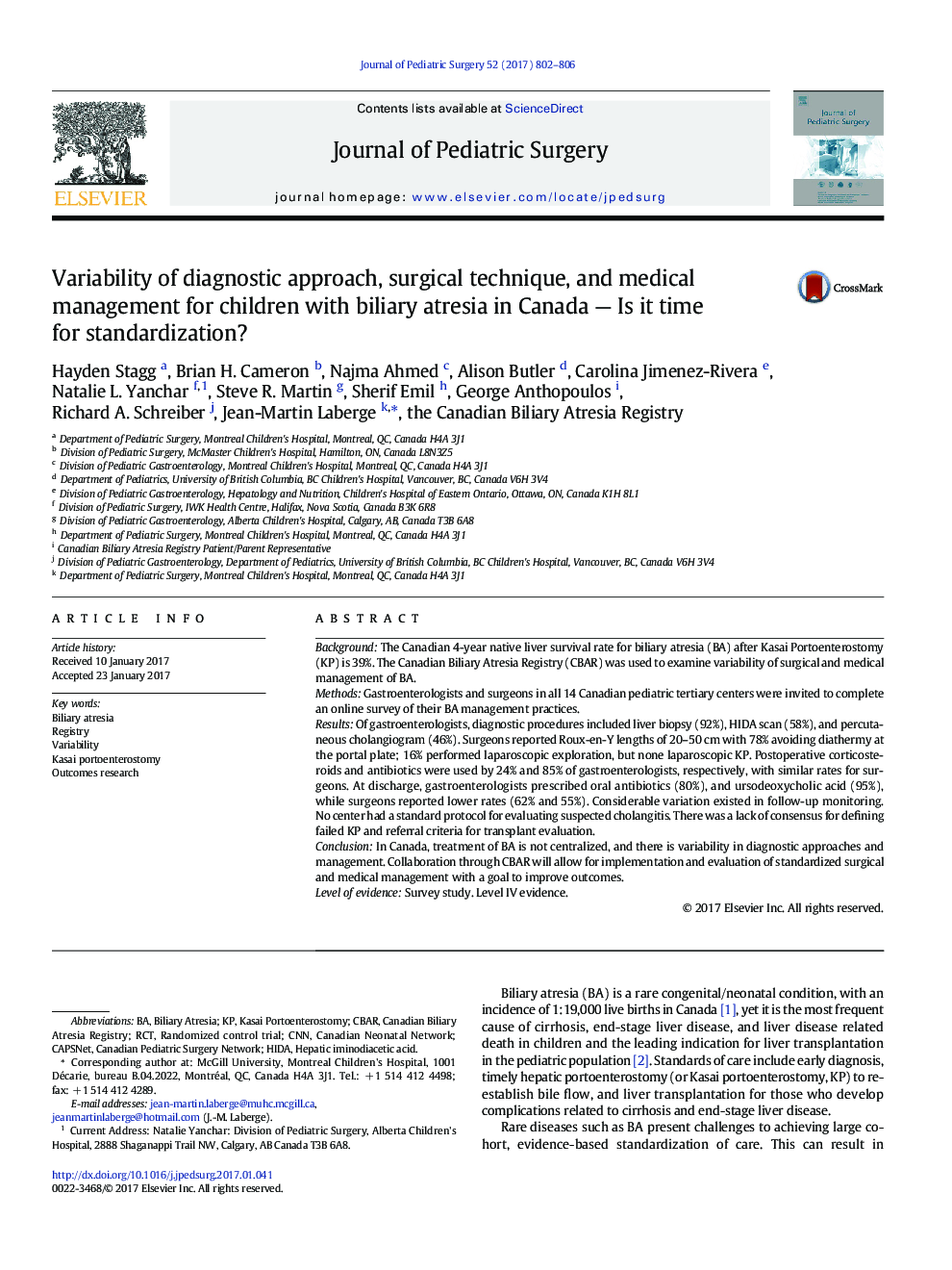| Article ID | Journal | Published Year | Pages | File Type |
|---|---|---|---|---|
| 5718467 | Journal of Pediatric Surgery | 2017 | 5 Pages |
BackgroundThe Canadian 4-year native liver survival rate for biliary atresia (BA) after Kasai Portoenterostomy (KP) is 39%. The Canadian Biliary Atresia Registry (CBAR) was used to examine variability of surgical and medical management of BA.MethodsGastroenterologists and surgeons in all 14 Canadian pediatric tertiary centers were invited to complete an online survey of their BA management practices.ResultsOf gastroenterologists, diagnostic procedures included liver biopsy (92%), HIDA scan (58%), and percutaneous cholangiogram (46%). Surgeons reported Roux-en-Y lengths of 20-50Â cm with 78% avoiding diathermy at the portal plate; 16% performed laparoscopic exploration, but none laparoscopic KP. Postoperative corticosteroids and antibiotics were used by 24% and 85% of gastroenterologists, respectively, with similar rates for surgeons. At discharge, gastroenterologists prescribed oral antibiotics (80%), and ursodeoxycholic acid (95%), while surgeons reported lower rates (62% and 55%). Considerable variation existed in follow-up monitoring. No center had a standard protocol for evaluating suspected cholangitis. There was a lack of consensus for defining failed KP and referral criteria for transplant evaluation.ConclusionIn Canada, treatment of BA is not centralized, and there is variability in diagnostic approaches and management. Collaboration through CBAR will allow for implementation and evaluation of standardized surgical and medical management with a goal to improve outcomes.Level of evidenceSurvey study. Level IV evidence.
